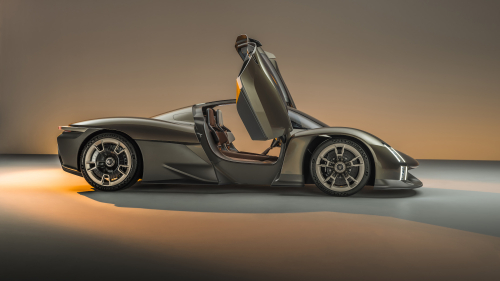Porsche’s vision is that if the Mission X goes into series production, then it should:
be the fastest road-legal vehicle around the Nürburgring Nordschleife;
have a power-to-weight ratio of roughly one PS per kilogram;
achieve downforce values that are well in excess of those delivered by the current 911 GT3 RS; and
offer significantly improved charging performance with its 900-volt system architecture and charge roughly twice as quickly as Porsche’s current frontrunner, the Taycan Turbo S.
The battery is installed centrally behind the vehicle’s seats. This ‘e-core layout’ centers the mass in the car. As with a conventionally powered mid-engined car, this provides the basis for excellent agility.

The wheels of the concept study feature elaborate details: the rear axle is fitted with almost transparent aeroblades, which are designed like turbines for better cooling of the brakes.
A lightweight glass dome with an exoskeleton made of carbon-fibre-reinforced plastic extends over both occupants. The Le Mans-style doors are attached to the A-pillar and the roof; they open forwards and upwards. This type of door was previously used on the legendary Porsche 917 racing car. Another eye-catcher is the light signature: for the Mission X, the designers have reinterpreted the characteristic Porsche four-point graphic. The vertical base form of the headlights was inspired by historic racing cars such as the Porsche 906 and 908 and drawn well down towards the road. A high-tech support structure frames the LED light modules and presents the exposed narrow elements of daytime running lights and indicators. When activated, the light opens up like an eye blinking open.
In the interior, beyond the CFRP seat shells and their six-point seatbelts integrated into the monocoque, further motorsport parallels include the open-top steering wheel, which has mode switches and shift paddles. There are multiple cameras on board. Recording starts as soon as the driver presses the Record button (REC) on the multi-purpose controller.